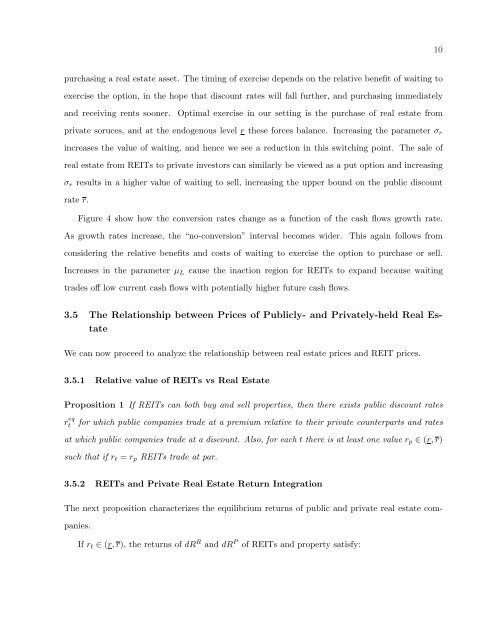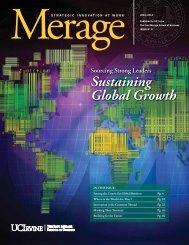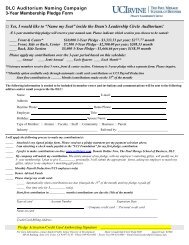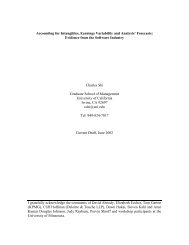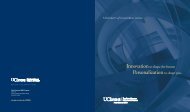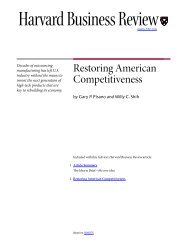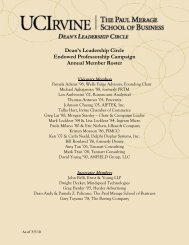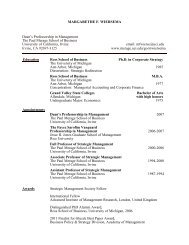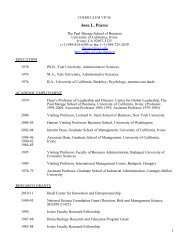View Carlson-Titman-Tiu Paper - The Paul Merage School of Business
View Carlson-Titman-Tiu Paper - The Paul Merage School of Business
View Carlson-Titman-Tiu Paper - The Paul Merage School of Business
Create successful ePaper yourself
Turn your PDF publications into a flip-book with our unique Google optimized e-Paper software.
purchasing a real estate asset. <strong>The</strong> timing <strong>of</strong> exercise depends on the relative benefit <strong>of</strong> waiting to<br />
exercise the option, in the hope that discount rates will fall further, and purchasing immediately<br />
and receiving rents sooner. Optimal exercise in our setting is the purchase <strong>of</strong> real estate from<br />
private soruces, and at the endogenous level r these forces balance. Increasing the parameter σr<br />
increases the value <strong>of</strong> waiting, and hence we see a reduction in this switching point. <strong>The</strong> sale <strong>of</strong><br />
real estate from REITs to private investors can similarly be viewed as a put option and increasing<br />
σr results in a higher value <strong>of</strong> waiting to sell, increasing the upper bound on the public discount<br />
rate r.<br />
Figure 4 show how the conversion rates change as a function <strong>of</strong> the cash flows growth rate.<br />
As growth rates increase, the “no-conversion” interval becomes wider. This again follows from<br />
considering the relative benefits and costs <strong>of</strong> waiting to exercise the option to purchase or sell.<br />
Increases in the parameter µL cause the inaction region for REITs to expand because waiting<br />
trades <strong>of</strong>f low current cash flows with potentially higher future cash flows.<br />
3.5 <strong>The</strong> Relationship between Prices <strong>of</strong> Publicly- and Privately-held Real Estate<br />
We can now proceed to analyze the relationship between real estate prices and REIT prices.<br />
3.5.1 Relative value <strong>of</strong> REITs vs Real Estate<br />
Proposition 1 If REITs can both buy and sell properties, then there exists public discount rates<br />
r eq<br />
t for which public companies trade at a premium relative to their private counterparts and rates<br />
at which public companies trade at a discount. Also, for each t there is at least one value rp ∈ (r, r)<br />
such that if rt = rp REITs trade at par.<br />
3.5.2 REITs and Private Real Estate Return Integration<br />
<strong>The</strong> next proposition characterizes the equilibrium returns <strong>of</strong> public and private real estate com-<br />
panies.<br />
If rt ∈ (r, r), the returns <strong>of</strong> dR R and dR P <strong>of</strong> REITs and property satisfy:<br />
10


